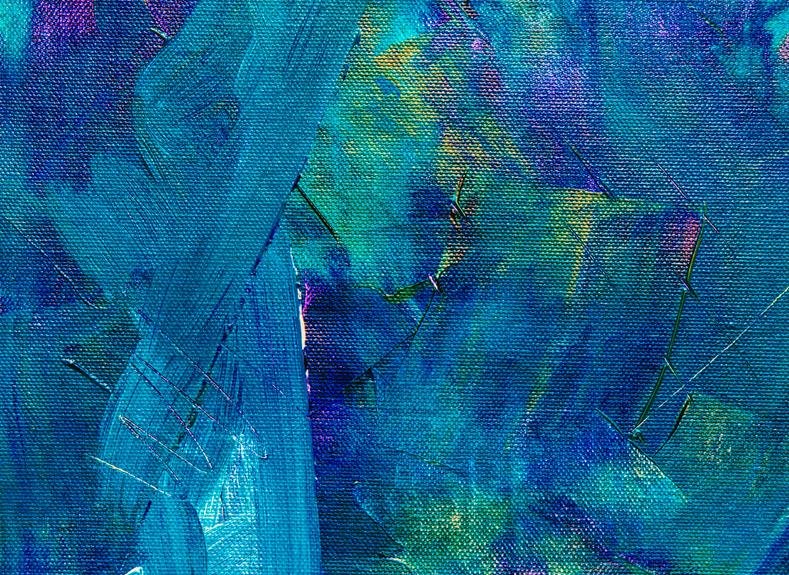Are you prepared to elevate your creative skills? Dive into the world of easy canvas painting and unlock your artistic potential. All you need are a few basic supplies to create stunning art pieces that truly stand out.
Choosing the right paint is your first step. This decision can significantly influence the feel and texture of your artwork. Don’t worry, we’ll guide you through it, ensuring you make the perfect choice for your canvas.
Next, we’ll explore different painting techniques together. This will allow you to understand how various strokes and styles can add uniqueness to your work. You’ll be surprised how these techniques can bring your art to life.
Finally, we’ll help you add that magic touch to your artwork. You’ll learn how to make your art pop, creating a visual impact that leaves a lasting impression.
So, let’s get inspired and embark on this vibrant journey of canvas painting together. Remember, our aim is to make this process as easy and enjoyable as possible for you.
Gathering Supplies for Canvas Painting
Ready to get started with canvas painting? First, you’ll need to gather your supplies. This includes canvas, acrylic paints, and brushes. Don’t forget other accessories that might come in handy!
With your supplies at hand, you can begin to explore your creative side. Feel free to experiment with different colors and textures. The goal is to express your own unique style, so don’t hold back!
If you’re looking for inspiration, there are plenty of resources available. You can find easy painting ideas online or in books. Use these as a starting point and then add your own unique twist.
Remember, when it comes to canvas painting, the sky’s the limit! You can create anything from abstract landscapes to detailed portraits. There’s no limit to what you can achieve with a bit of creativity.
So, go ahead and let your imagination run wild. With the right supplies and a bit of effort, you can create something truly special.
But before you start, let’s talk about different types of canvas paint. This will help you decide which ones will best bring your artwork to life!
Exploring Different Types of Canvas Paint
Exploring the world of canvas painting is an exciting adventure. With a plethora of paint options available, it might seem challenging to pick the perfect one. Choosing the right type of canvas paint for your project can be simplified by considering a few key factors.
Firstly, let’s talk about color. Vibrant hues can certainly make your painting stand out and command attention. Don’t be afraid to go bold! On the other hand, playing with different shades can add depth and texture to your artwork. It’s all about striking the right balance.
Next, consider the transparency of your paints. Have you ever thought about using semi-transparent paints? They can give your artwork a unique touch, creating intriguing effects that draw the viewer in. But, don’t forget about opaque paints. They’re excellent for creating a striking contrast within your artwork, adding another layer of depth.
Remember, when it comes to canvas painting, your imagination is your best tool. Whether you prefer subtle nuances or bold statements, the possibilities are virtually limitless. So, let your creativity run wild as you find the perfect paint for your masterpiece.
And most importantly, remember to have fun along the way!
Choosing a Canvas Painting Idea
Embarking on your canvas painting adventure begins with a whirlwind of ideas. You might want to bring an age-old masterpiece back to life or maybe dabble in the world of abstract art. Canvas painting is a broad field that lets you channel your inner artist in many ways.
Let’s take a look at certain elements to consider. First up, the subject – it could be a serene landscape, a captivating portrait, or a vibrant still life. Each has its unique charm and can make your canvas come alive.
Next, consider the color schemes. Warm colors can evoke a sense of comfort and intimacy, while cool colors can bring a calming and soothing effect. For a more lively feel, bright colors are your go-to.
Lastly, think about the technique. From the delicate strokes of Impressionism to the dot-focused approach of Pointillism or the emotional intensity of Expressionism, the choice is yours.
Executing Your Canvas Painting
Ready to put your canvas painting idea into action? Let’s get started. First, gather all your supplies. Your imagination is key, so let it run wild!
Before you dive in, there are a few tips to keep in mind. Firstly, prepare your canvas thoroughly. A clean, primed canvas is a perfect starting point. If needed, tape the edges to keep them clean and sharp.
Next, you might want to sketch out your design in pencil. It gives you a sneak peek of what your final painting will look like and it can help avoid any unwanted surprises.
Now, it’s time to get creative! Play around with color and texture. Try different brush strokes and techniques. Remember, painting is all about discovering through trial and error. Don’t worry about making mistakes, they’re part of the process.
Let yourself be creatively free. Soon enough, you’ll see your unique canvas painting come to life.
As your painting takes shape, remember the power of finishing touches. They can add depth and dimension, making your painting truly come alive. Remember, you’re not just painting, you’re creating a masterpiece. So, have fun and let your creativity shine!
Finishing Touches for Your Canvas Painting
Adding the final touches to your canvas painting can really bring it to life. One way to do this is by playing around with various mediums to add texture and character. This will give your artwork a unique feel that’s all your own.
Experimenting with different paint finishes is another way to enhance your painting. You might try anything from a matte finish to a glossy one. Each one can create a different mood or atmosphere in your artwork.
Colors play a crucial part in any painting. Why not use a color wheel to help you put together a beautifully harmonious color palette? It’s a simple tool that can make a big difference in your work.
For those who like to venture outside the box, consider techniques such as dripping or splattering paint onto the canvas. This can give your painting a one-of-a-kind look that’s sure to turn heads.
Layering different colors is another technique you can try. It’s a great way to create a captivating texture in your painting. The layers can create a sense of depth and complexity that’s truly intriguing.
Finally, consider adding some embellishments to your canvas. Beads, buttons, or fabrics can add a touch of depth and intrigue to your piece. It’s all about finding new and unexpected ways to make your painting stand out.
Frequently Asked Questions
What Is the Best Way to Store Canvas and Supplies When Not in Use?
When you’re not using your canvas and art supplies, it’s important to store them properly. Plastic storage containers or specially designed canvas art boxes are great options. They shield your items from dust and damaging moisture.
But don’t just leave these containers plain and boring. Why not add a bit of your artistic flair to them? Use your paints or stickers to decorate them. It’s a fun way to express your creativity even when you’re not working on a specific project.
What Is the Easiest Type of Canvas Painting for a Beginner?
If you’re just starting out with canvas painting, you might find abstract art quite enjoyable. Why? Because it gives you the freedom to express yourself. You can play around with various colors and brush strokes, creating something truly unique.
Don’t be afraid to experiment. Remember, there are no rules in abstract art. It’s all about being daring and letting your imagination take the lead.
In essence, abstract painting encourages you to unleash your creativity. It’s a fun way to start your journey in the world of canvas painting. So, go ahead, pick up that brush and start painting.
What Are Some Tips for Coming up With a Good Canvas Painting Idea?
Unleash the power of your imagination when you’re trying to come up with a canvas painting idea. This is the perfect moment to let your creativity run wild. Experiment with different colors and shapes. You’ll be amazed at the stories that can be told through these simple elements.
Think about a symbol or phrase that holds significance for you. It can be anything that stirs your emotions or gets your creative juices flowing. Then, incorporate this into your painting. It’s a great way to infuse personal meaning into your artwork.
Strive to be different with your painting ideas. It’s easy to follow the crowd, but your unique perspective is what makes your artwork special. So, don’t hesitate to think outside the box. Let your ideas and inspirations flow freely. Remember, there’s no right or wrong in art. Enjoy the process!
What Are Some Techniques for Blending Colors When Painting?
Understanding color theory is a great starting point when it comes to blending colors in painting. It’s like a roadmap, guiding you on which colors work well together and how they interact. It’s something that can really help in creating a harmonious painting.
Now, let’s talk about specific techniques. One of them is wet-on-dry. This technique involves applying wet paint onto a dry surface. It’s a method that allows you to have full control over the blending process. You can decide how much of each color you want to mix and where you want them to merge.
On the other hand, the wet-on-wet technique is quite different. Here, you apply wet paint onto an already wet surface. This results in a spontaneous blending of colors right on your canvas. It’s a fun technique that can create some really interesting effects!
Lastly, there’s color lifting. This method involves removing wet or damp paint to lighten an area on your canvas. It’s a handy technique for correcting mistakes or introducing lighter tones into your painting.
What Are the Most Common Mistakes Made When Painting a Canvas?
Alright, let’s chat about painting. You know, it’s okay to make mistakes. In fact, they’re often a part of the learning process. Now, there are a few common mistakes that people tend to make when they’re painting on a canvas.
First up is overworking the canvas. It’s like overcooking a meal – you don’t want to do that. The key here is to know when to stop. Overdoing it can lead to a muddy, unclear outcome.
Secondly, there’s the issue of using too much paint. It’s a common error, especially for beginners. Just remember, less is often more. Take it slow, add the paint gradually, and you’ll find you can achieve a better balance and depth in your work.
And then there’s the matter of blending colors. This can be tricky, but getting it right is important for creating that seamless, natural look in your art. A lot of people struggle with this, but don’t worry – with practice and a bit of patience, you’ll get the hang of it!
Conclusion
You’ve made excellent progress on your painting journey. You’ve got the right supplies, nailed down the techniques, and let your imagination run wild. The result? A stunning piece of art!
What next? Well, it’s time to show off your masterpiece. Find a perfect spot in your home for your canvas painting. Let it grab the attention of your friends and family. Let them admire your talent and hard work.
But don’t stop there, keep the creative juices flowing. Art isn’t something that should be limited. Remember, creating more art can be as simple as grabbing a canvas and some paint. So, why wait? Let your creativity soar and dive into your next project!
Remember, the language of art is universal and easy to understand. You don’t need to get tangled in complex words or phrases. Simple, everyday language is your best friend. Let your art speak for itself.
We’re having a conversation here, not a lecture. So, let’s keep it casual, engaging and fun. And remember, proper grammar is important. It ensures your thoughts are communicated clearly and effectively.
The goal here is to make sure everyone can easily understand and enjoy our discussion on art. So, let’s avoid using complicated words like ‘delve’ and the likes.
Happy painting!









